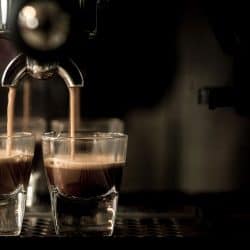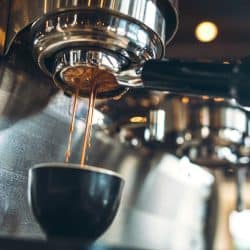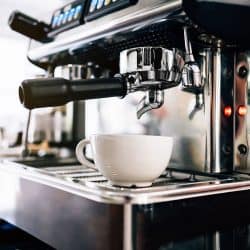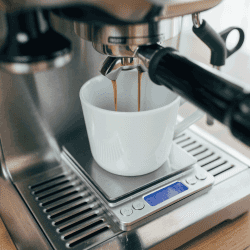Nothing delivers a more satisfying pick-me-up than a perfectly brewed shot of espresso. If your machine isn't generating enough pressure, you may be getting shots that take too long to pull or taste off. What could be causing this? We've done the research, and here's the low down.
The most common causes for an espresso machine not building enough pressure have to do with the coffee. Too coarse a grind, too little coffee, or insufficiently tamping the grounds before brewing can all lead to inadequate pressure for a proper brew.
Problems with pressure can also come from a clogged or faulty pump or meager water flow to the machine.
We'll go over how to perfectly prepare your coffee before you pull your espresso shots so you'll get your coffee the way you want it. We'll also look at how pressure works, both in the espresso machine and the espresso itself. Read on to get the full story.
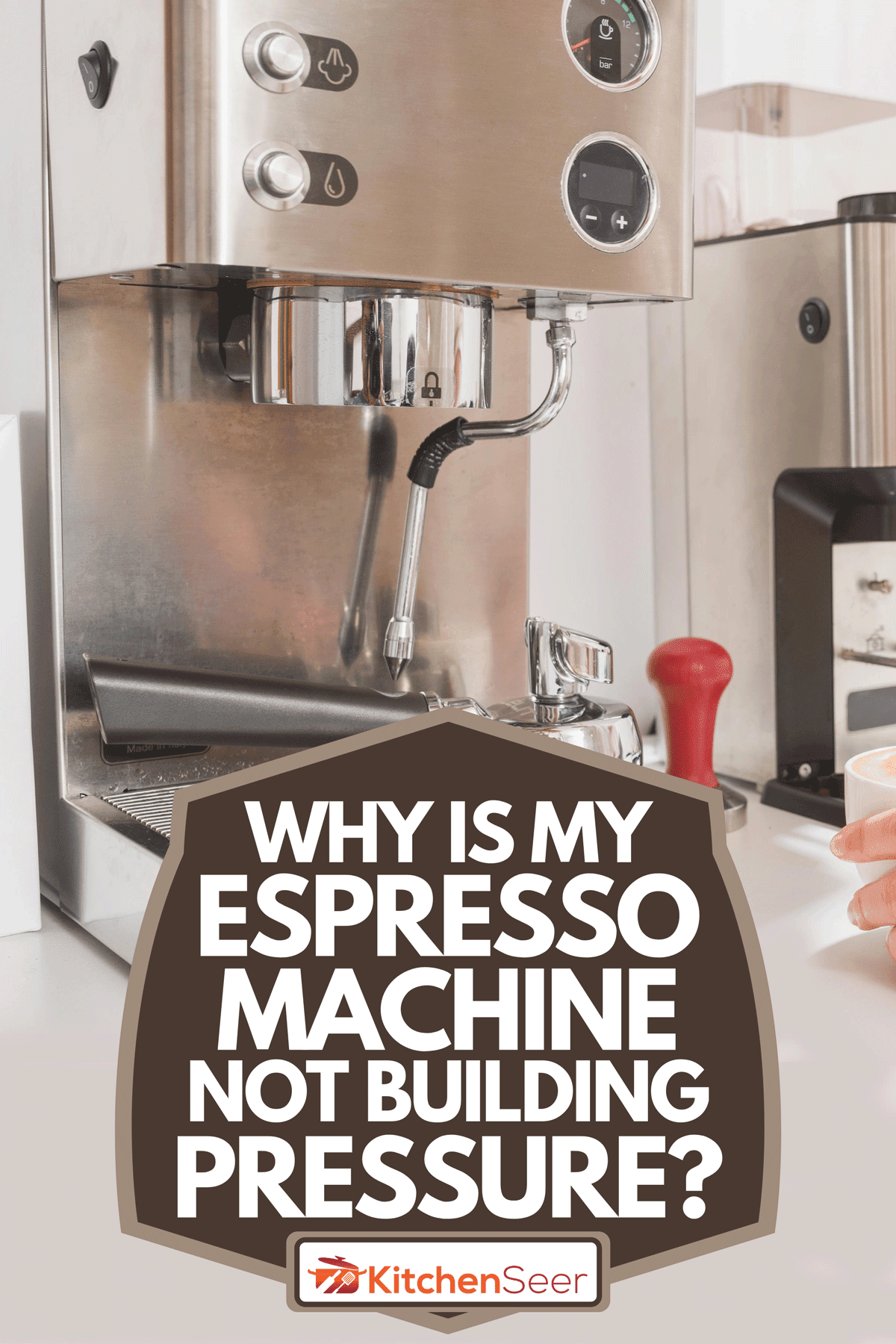
How to prepare espresso grounds for perfect pressure
If your espresso isn't brewing with enough pressure, the first place to look is the beans. It is essential to finely grind the beans, measure them correctly, and tamp them firmly for a perfect espresso.
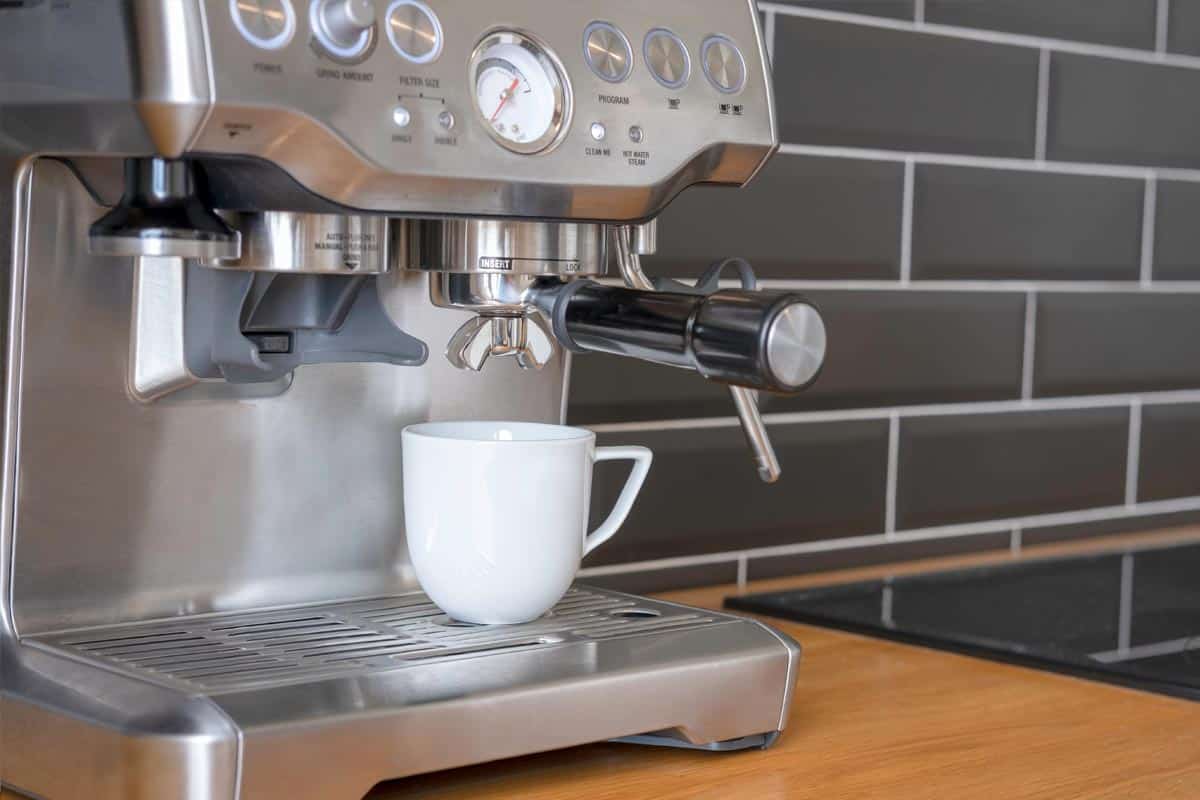
Grind your coffee beans finely
The first step is to grind them finely. Ideally, you want to grind them yourself. This will assure the optimal freshness of the beans when they go into the machine and a vibrant end product.
Some espresso machines have built-in grinders, but if yours doesn't, you may want to invest in a burr grinder. This type of grinder is the best for getting the grounds a consistent fineness.
Click here to see this grinder on Amazon.
The finer you grind your coffee, the more pressure you'll be able to create in the machine. The video below from Hoon's Coffee does an excellent job illustrating the effects of different grinder settings on pressure.
It is also possible to grind your coffee too finely for espresso. You can learn more about finding the perfect grind in our article, "Can Coffee Be Too Fine for an Espresso Machine?"
Measure your grounds
For every one-ounce shot of espresso, you'll want 6 to 8 grams of coffee grounds, depending on your tastes. For a double shot, double that.
It is unnecessary to weigh your grounds on a scale every time you make espresso. Instead, find a scoop or spoon that you can get the right amount for you. Once you've checked it on the scale enough times to know it's consistent, you can use that scoop or spoon.
Remember that more grounds will lead to more pressure in your machine. If you are having trouble with inadequate pressure, you may want to increase the amount of coffee you're using.
Tamp the grounds
Perhaps the most intimidating part of preparing the grounds for your machine is tamping them. Fortunately, compared to properly grinding and measuring your coffee, how you tamp the grounds won't have a huge effect on pressure.
The most important part of tamping is to get the grounds level and evenly distributed in the basket. Uneven grounds will lead to uneven extraction.
If the grounds are very unevenly distributed or you don't tamp at all, you may have issues with low pressure when making your espresso.
Click here to see this tamper on Amazon.
In the video below, you can learn about how to tamp your espresso and what you don't need to worry about.
What creates pressure in an espresso machine?
The main thing that separates an espresso from pour-over coffee is the brewing pressure. There are several methods espresso machines can use to create the ideal pressure, but it all comes down to two basics: there must be a force pushing the water forward and resistance to that force.
The machine itself only offers minimal resistance to the water pressure. Most of the resistance will come from the coffee grounds themselves. That is why getting the grind, portion, and tamping right on the coffee is so important.
Espresso machines generate the force behind the water in a variety of ways. Steam pressure, pistons, and air pumps are used in some espresso machines, but the most common type is the pump-driven espresso machine.
These machines use a motor-driven pump to move water through the machine with sufficient force to build pressure. The water can be supplied by a reservoir or directly through a cold-water line. A heating element brings the water to near boiling temperatures driven through the machine.
The water pumped through the machine will already be under pressure as it reaches the coffee grounds. It will rely on the grounds to maintain that pressure. If everything goes right, the correct amount of pressure is built up before the water makes it through the grounds to emerge as espresso.
What is the correct brewing pressure for espresso?
The pervasive wisdom is that 9 bars of pressure and 25 seconds of brewing define the sweet spot for a perfect shot of espresso. But what exactly does that mean?
First, let's unload what a bar is. Bars are a metric unit of pressure, commonly used for espresso machines and scuba tanks. A single bar is 14.5 psi, roughly the air pressure slightly above sea level on earth.
Most espresso machines that have pressure gauges display the pressure in bars. In some cases, pressures between 8 and 10 bars will be marked to show the range for making a proper shot of espresso.
Do you need a pressure gauge on an espresso machine?
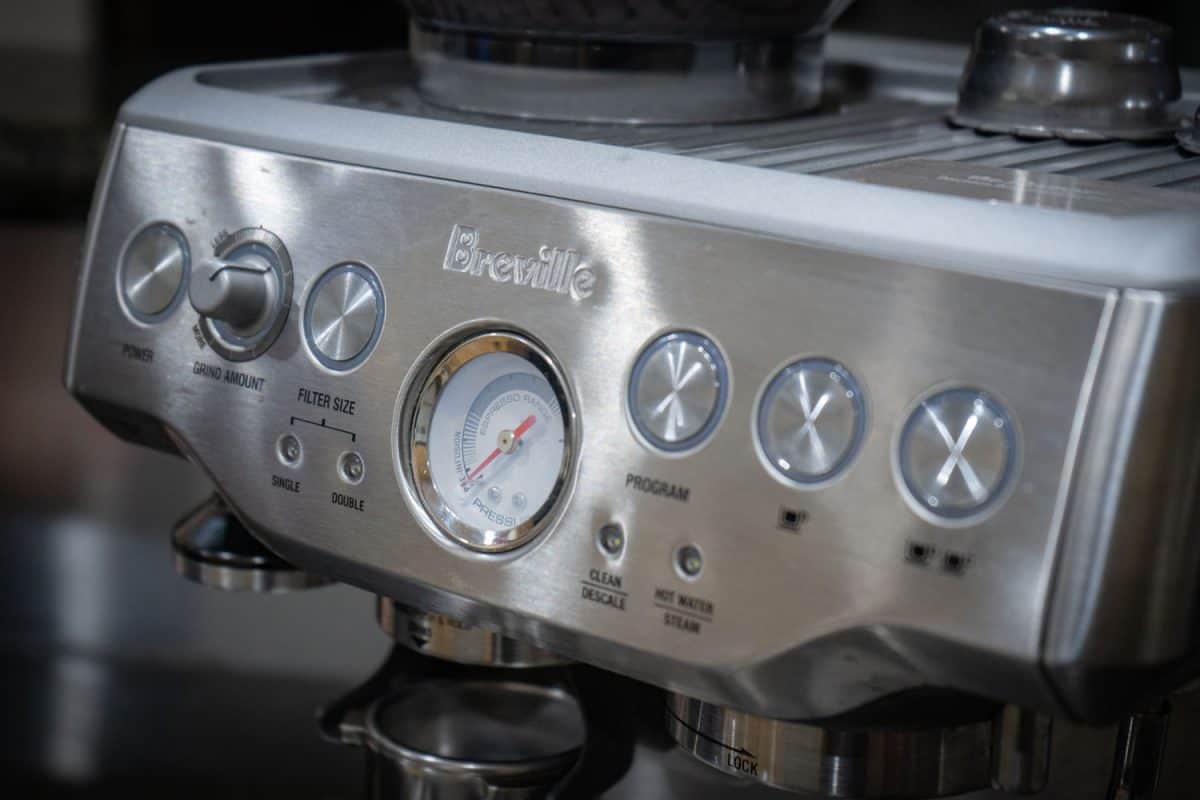
Not all espresso machines come with pressure gauges, and most of the time, you won't need one. Like all other appliances, Espresso machines are getting more advanced every year. Sensors take care of keeping the water at an ideal pressure inside the machine, so you don't have to worry about it.
Of course, if you grind, measure, and tamp your grounds by hand, it may take some trial and error to get enough pressure for your perfect espresso. However, the taste of the resulting espresso will be a better indicator than a pressure gauge anyways.
Pressure gauges can be a helpful indicator when there is a problem with your water supply or pump. However, issues of that nature will also be evident while making espresso anyways.
You may only need the pressure gauge if you have an espresso machine with adjustable pressure. If you enjoy experimenting and getting into the nitty-gritty on the technical side of things, these kinds of espresso machines may appeal to you.
For most home baristas, pressure gauges aren't necessary. They can look nice and let you know a little more about what's happening inside, but you don't need one to make delicious espresso.
What does 15 bar coffee mean?
You have likely seen 15 bar espresso machines advertised in shops or online before. These are machines that can build up to 15 bars of pressure. But if 8 to 10 bars are ideal for making espresso, why do you see so many 15 bar coffee machines on the market?
The 15 bars of pressure these machines produce aren't at the brewing end of the machine. Instead, the water is pressurized up to 15 bars before moving through the machine and eventually to your coffee. As the water takes its journey, it will lose pressure, hopefully leaving you with the 8 to 10 bars you want at brewing.
It used to be the case that buying a 15 bar espresso machine was guaranteed quality. Unfortunately, as these machines got their reputation for excellence and the associated costs, some companies began producing inferior machines they could still sell as 15 bar espresso machines.
The problem with these machines is not that they can't create 15 bars of pressure; they all can. However, inferior espresso machines often lose too much pressure before meeting the coffee.
You will get better results using a higher quality espresso machine with fewer total bars of pressure than a poorly built 15 bar espresso machine.
How does pressure affect espresso?
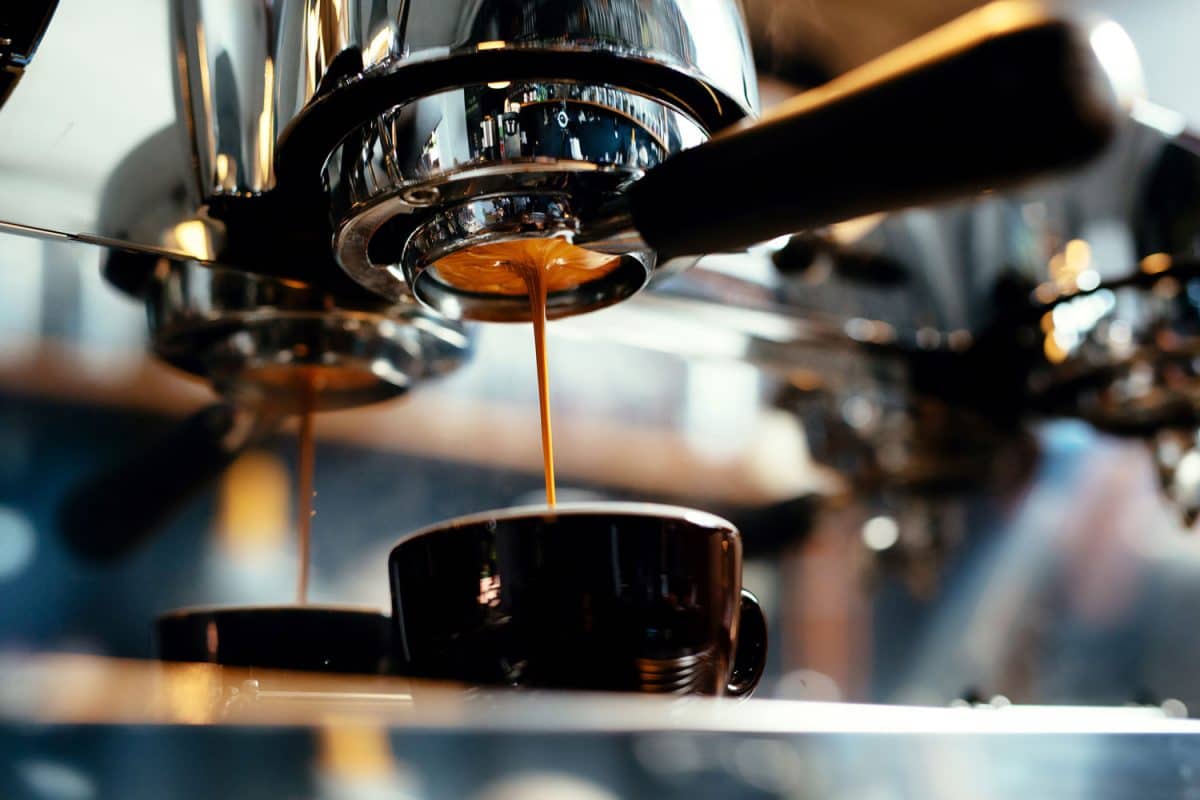
When making espresso, time and pressure can affect the end product's taste as much or even more than the beans you use.
This is because coffee beans are full of a wide variety of molecules. Whenever you make coffee, you are trying to extract the right balance of those molecules for a perfect taste.
The higher the pressure, the less time it will take to make espresso. However, some flavors are brought out more by pressure and some more by time.
While 9 bars at 25 to 30 seconds is considered pretty universal for a perfect shot, you may find that you like yours at a higher pressure and less time or lower pressure and more time. You can adjust your espresso-making methods to find what works best for you.
You can learn more about the chemistry behind the flavor and aroma of coffee in our article, "How Long Should a Percolator Perk?" Not only will you learn how to percolate a perfect cup, but you'll also learn more about how time and temperature affect extraction.
Final Thoughts
Espresso may taste like liquid gold, but it doesn't take any secret alchemy to pull your perfect shot. Knowing how to prepare your coffee beans and how the pressure in your machine works can help you put the pressure on the espresso and off yourself.
Happy brewing!



